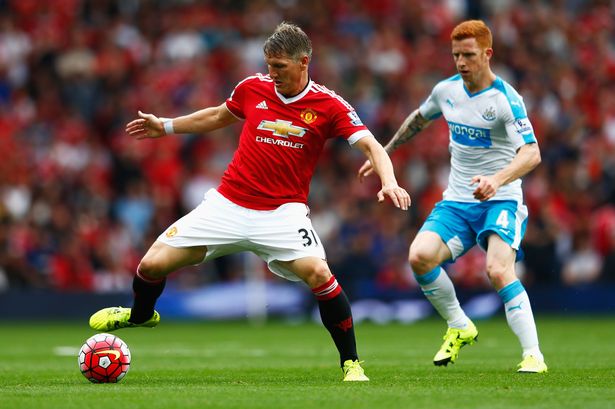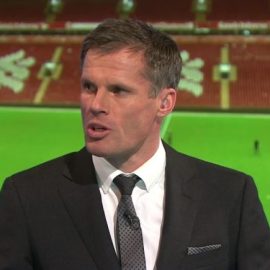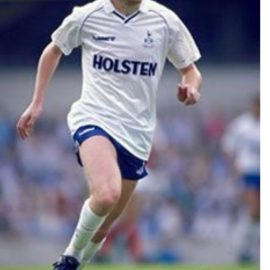Manchester United failed to maintain their 100% record in the 2015/16 Premier League as Newcastle United kept them at bay in yesterday’s lunch time kick-off at Old Trafford. The Magpies secured their second draw of the season, while the Red Devils rose two places up to second, behind Leicester City.
Line-ups
Manchester United: Sergio Romero, Luke Shaw, Daley Blind, Chris Smalling, Matteo Darmian, Bastian Schweinsteiger, Morgan Schneiderlin, Juan Mata, Adnan Januzaj, Memphis Depay, Wayne Rooney.
Newcastle United: Tim Krul, Massadio Haidara, Fabricio Coloccini, Steven Taylor, Chancel Mbemba, Jack Colback, Vurnon Anita, Georginio Wijnaldum, Ayoze Perez, Gabriel Obertan, Aleksandar Mitrovic.
Basic Set-Ups
Manchester United lined up in a 4-2-3-1 shape; Schweinsteiger made his first league start and played a box-to-box role while Schneiderlin sat beside him in the base of midfield. Rooney was the lone man up front, supported by Memphis and Mata from the sides while Januzaj occupied the hole.
Newcastle, too, lined up in a familiar-looking 4-2-3-1, but were more defensively structured. Anita was the deepest-lying of their midfielders, while Perez, Wijnaldum, Colback and Obertan maintained their horizontal alignment behind lone striker Mitrovic.
Newcastle Marking Schemes
Newcastle had marking employed on Manchester United’s most potent attackers, Rooney and Memphis. Coloccini shadowed Rooney all afternoon, while centre-back and stopgap right-back Mbemba kept tight to Memphis on the left flank whenever the Dutchman drifted inside from the wide left channel.
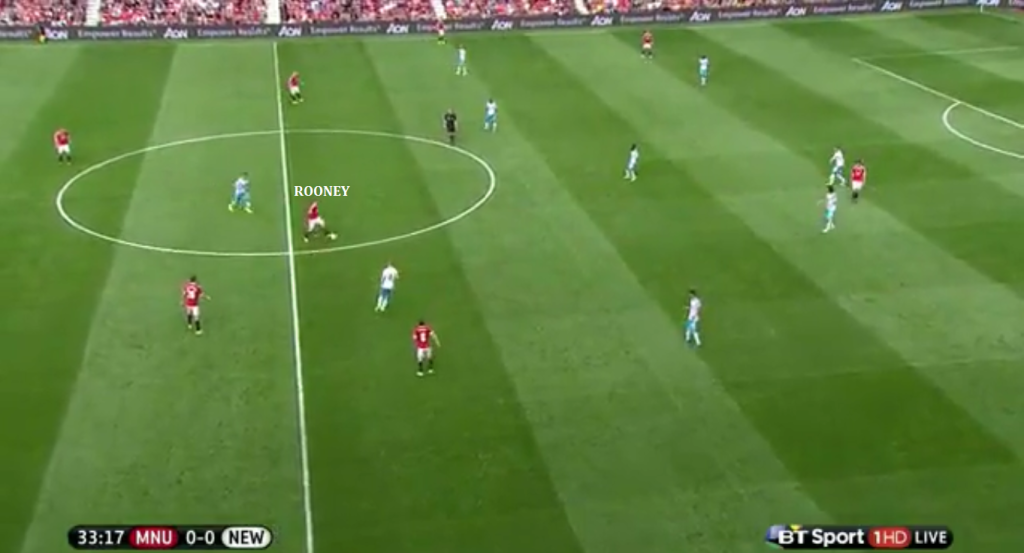
Coloccini’s close watch on Rooney had a clear impact on the England captain, who struggled for space, and even forced him to drop deeper to collect possession and create chances. Rooney failed to influence play much from deeper areas owing to United’s lack of movement in forward areas.
Manchester United’s Midfield Overloads
Manchester United enjoyed plenty possession (70%) and created overloads in midfield although they rarely resulted in clear cut goalcoring chances. Schweinsteiger played through the left half space which allowed combinations between him, Memphis and Shaw. The space between Anita’s line and Newcastle’s other midfielders allowed United to seek Memphis easily through diagonals from the central areas.
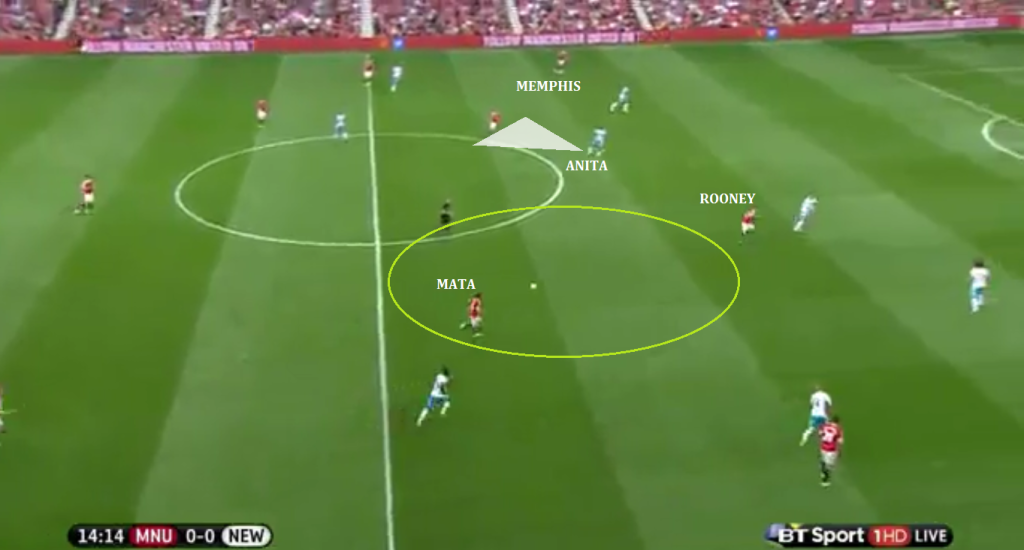
Mata drifted inside from his wide right position on numerous occasions to combine with right-back Darmian, who had most of his touches in the Newcastle half. These midfield overloads put pressure on Newcastle from the central areas initially, and even resulted in wide open spaces ahead of Anita.
Manchester United’s Lack Of Penetration
The Red Devils had 20 attempts, out of which only 9 came from inside the penalty area. This points to the lack of penetration from the home side, whose main goal threats either came from Memphis cutting inside from the left or from hopeful shots from distance.
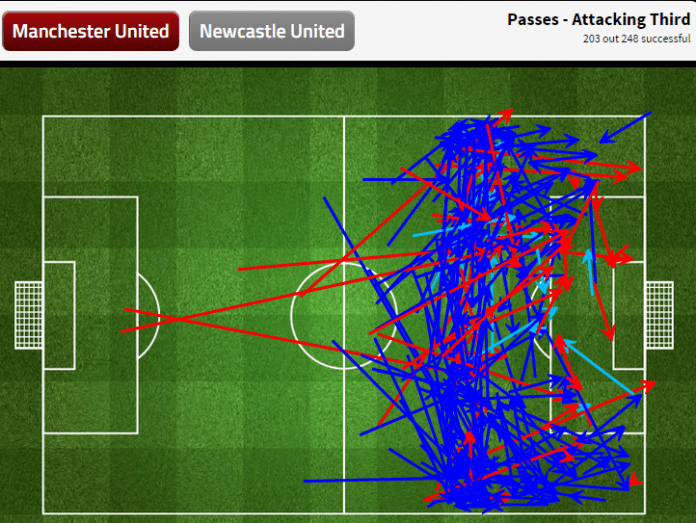
Schweinsteiger was a driving influence for the majority of his stay on the pitch but failed to connect well with Rooney, while Michael Carrick, who replaced the German at the hour mark, sat deep while trying to open an already deep Newcastle rear guard with his precise passes.
Newcastle’s Compactness
Newcastle remained compact throughout, both horizontally and vertically. The Magpies afforded little space in the central channels for penetration from their opponents, while kept the wings fairly understaffed which led to space aplenty for Memphis to cut inside as well as for Darmian to make his deep runs from right-back.
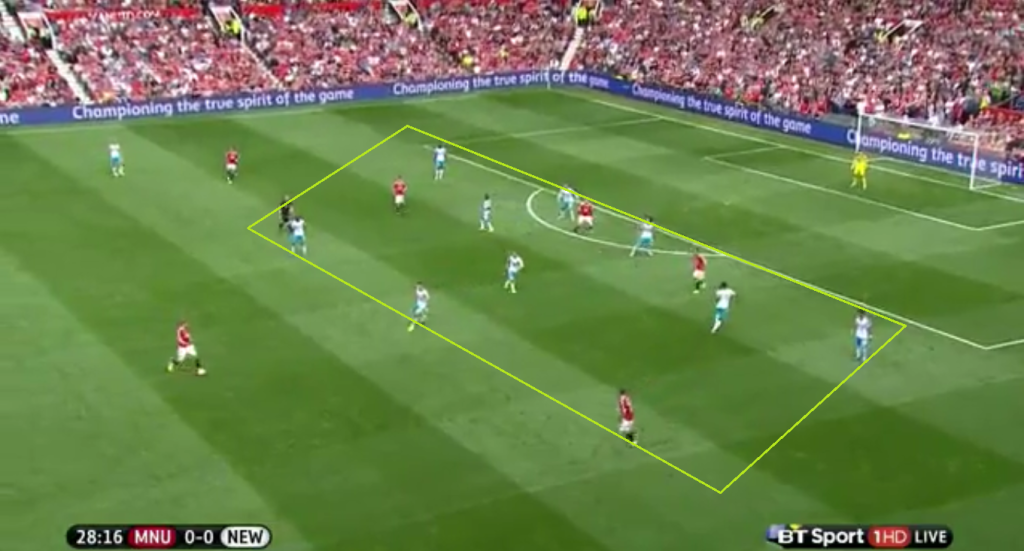
Their compactness also somewhat hindered their attacking momentum. They tended to lose possession seconds after starting a counter attack, which primarily stemmed from their players not getting into good areas in transitioning from defence to attack. Mitrovic also seemed to cut a frustrated figure, and had little to no support from Perez and Obertan.
Substitutions
There were quite a few substitutions to impact the scoreline which never really materialised. United brought on Carrick for Schweinsteiger which allowed Schneiderlin to move further ahead while the Englishman sat back. Januzaj’s change for Javier Hernandez was a typical attack-minded move from the home side.
Hernandez slipped into the “9” space, which allowed Rooney to free himself from Coloccini’s shackles while also helping him create although by then Newcastle had already employed a blanket defence, while focusing fully on their attempts at avoiding losing a goal.
This was the reason why Perez, who tracked back industriously to help Haidara on the left, was taken off for Cheick Tiote for the last quarter hour. This allowed Newcastle to have added presence in midfield, which further thwarted United’s attacking impetus.
Conclusion
Manchester United were toothless in attack, Rooney was afforded little freedom, while Newcastle goalkeeper Krul was brilliant all game, making four saves and denying Hernandez a clear goal in the dying stages.
Newcastle were compact and allowed little space through the middle for their opponents, although their approach hindered them from building attacking momentum. Mitrovic had little support form Perez and Obertan, who were forced to play deeper than usual.
Add Sportslens to your Google News Feed!
